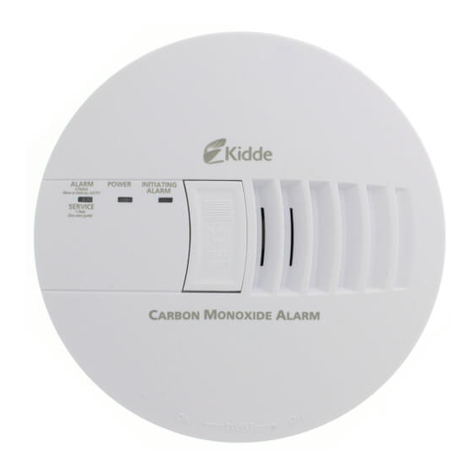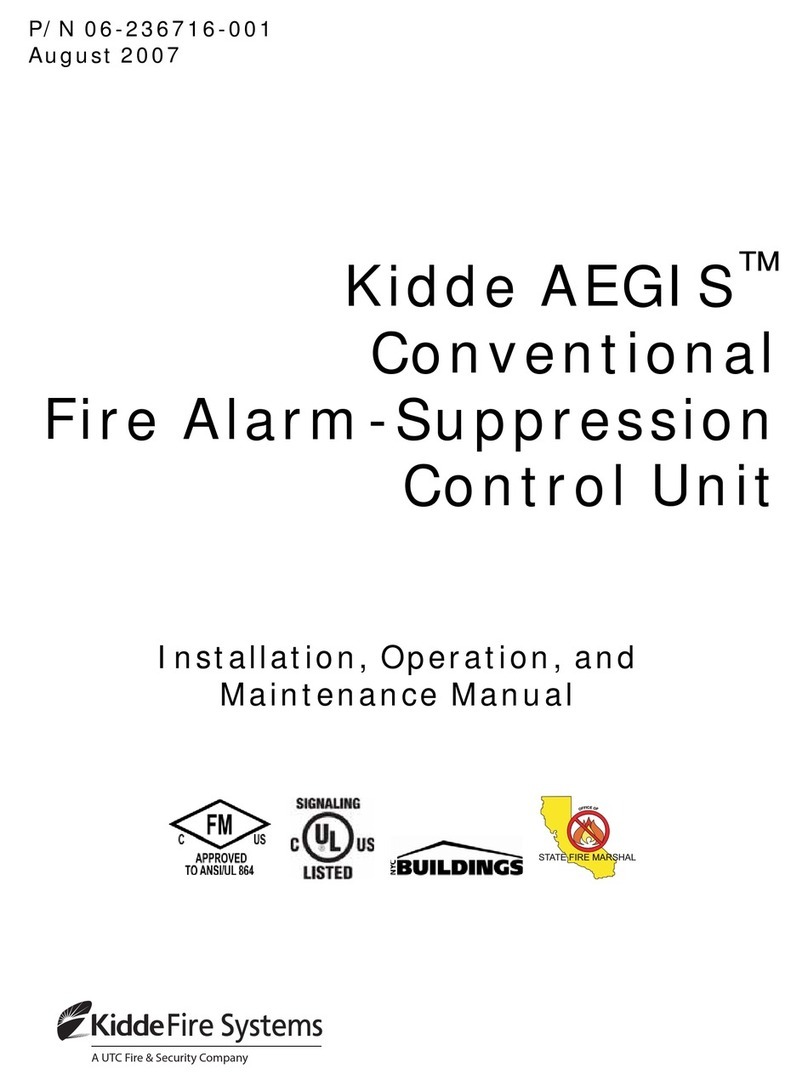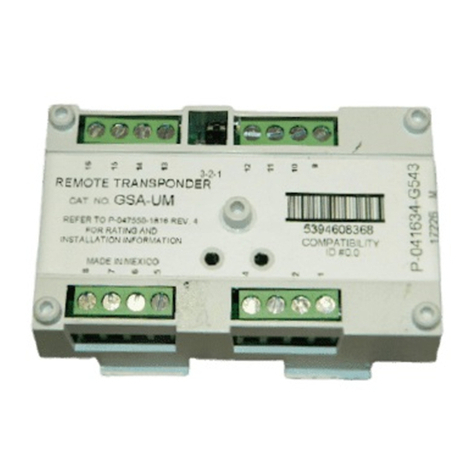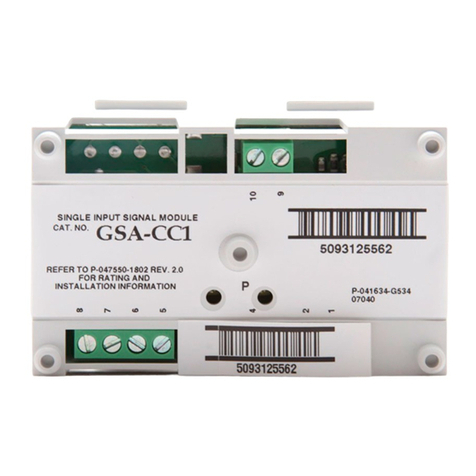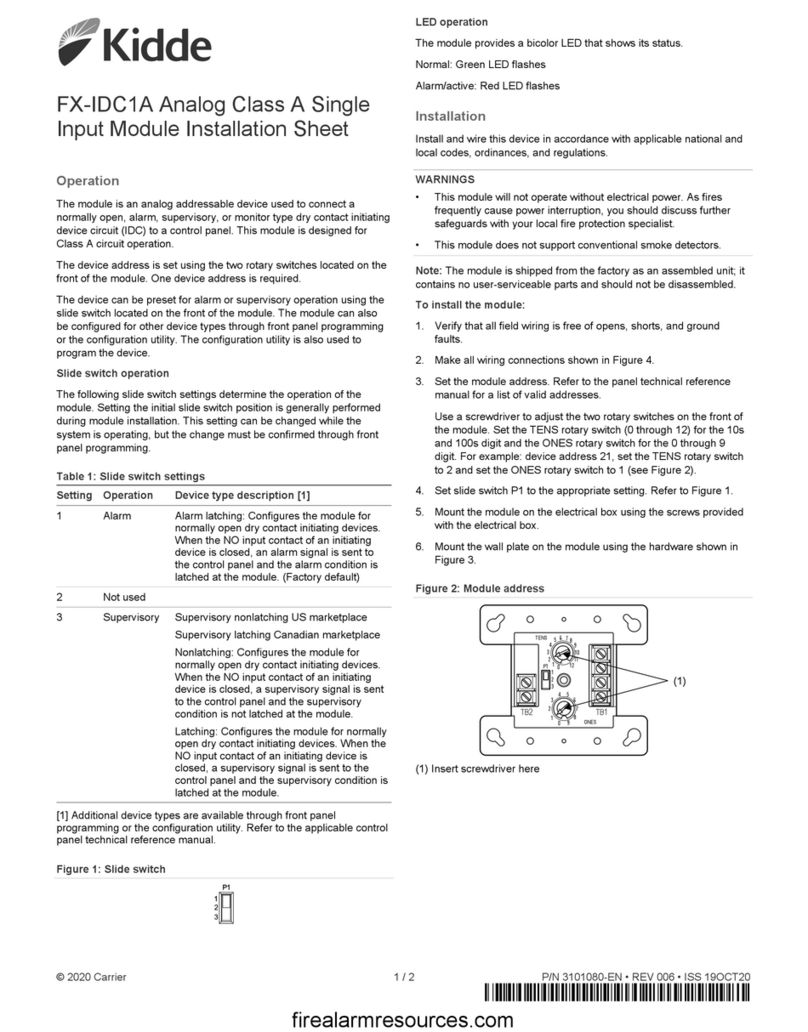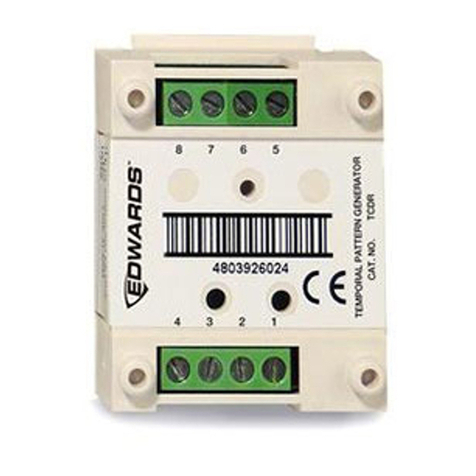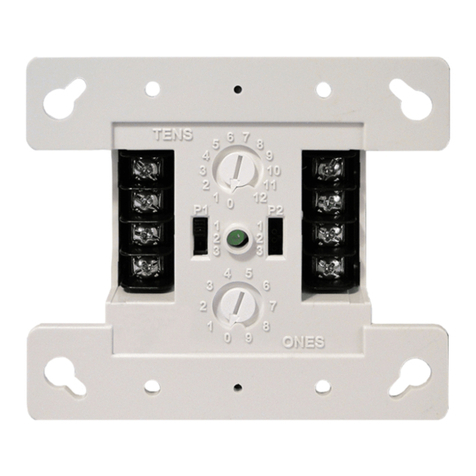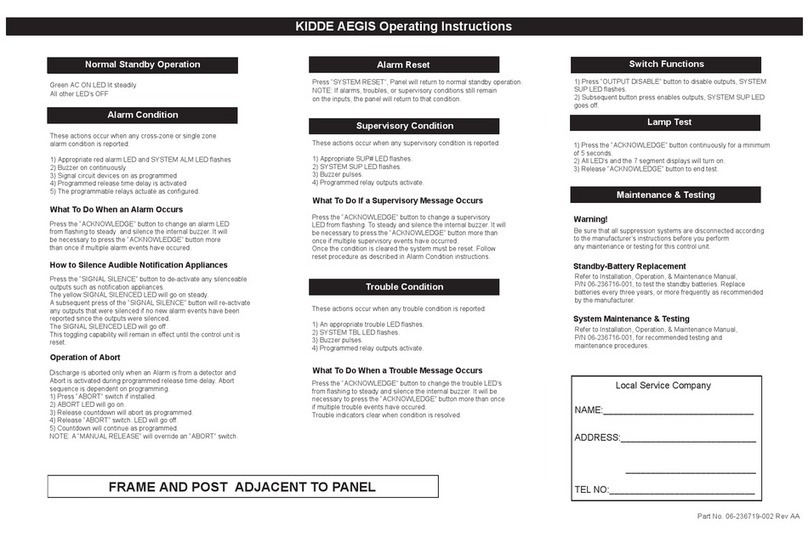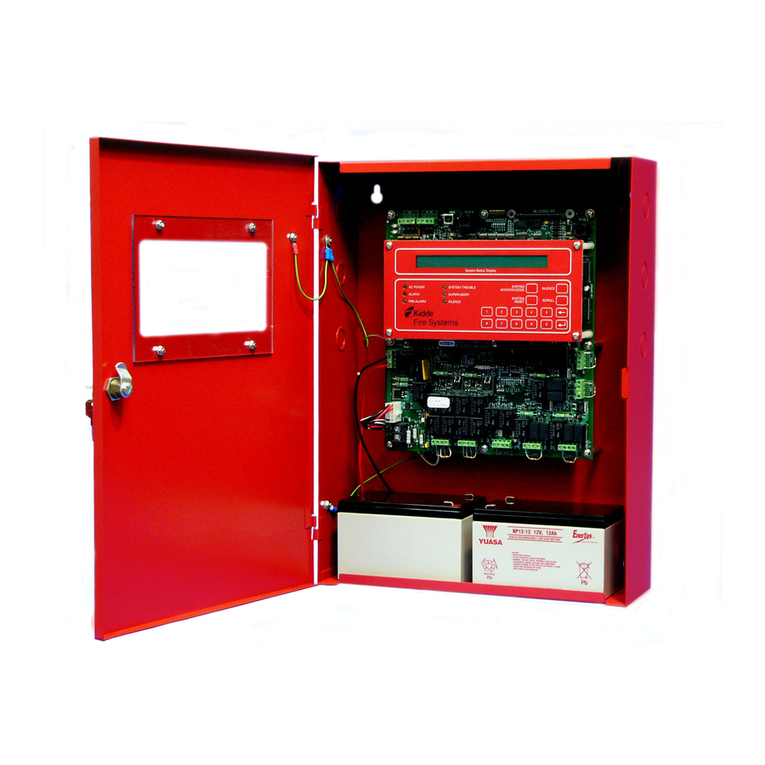
5 Dual Zone Digital Location Control Unit Installation and Operation Manual
Regulatory information
The control unit is approved to UL864 (tenthedition).
Installations that are required to comply with UL must be installed in accordance
with NFPA 70, NFPA 72, and NEC 760 (National Electric Code).
Non-UL installations must be installed in accordance with the relevant local
standards and AHJ’s (Authority Having Jurisdiction).
Description
Alarmline II Digital Sensor Cable has an insulation designed to soften at a
particular temperature (the cable alarm temperature) – when the cable reaches
this temperature, it short circuits and activates an alarm condition.
The Dual Zone Digital Location Control Unit is an optional component for any
Alarmline II Digital LHD system and offers enhanced monitoring and interfacing
features, as well as simple status indications and controls for monitoring the LHD
system.
Dual LHD zones are provided on the control unit, which enable the following
features:
• Two zones of sensor cable:Two monitored inputs allow connection of two
Alarmline II Digital Sensor Cables to one control unit. The sensor cables for
each zone are independent and can be different alarm temperatures if
required. The two zones of sensor cable can be used to protect two separate
risk areas or can be used to protect the same risk area using two different
temperature cables providing pre-alarm and alarm type system.
• Independent or interlock modes of operation:Each zone on the control
unit has alarm and fault outputs for independent signaling to a main fire alarm
control panel. The two zones can also be programmed in interlock mode –
this provides a coincidence scenario where both zones must be in alarm
before any alarm outputs are triggered.
The control unit provides open circuit fault monitoring of the digital sensor cable
with a short circuit on the digital cable activating an alarm condition.
Interposing cable can be used between the control unit zone input and the digital
sensor cable allowing the control unit to be mounted remotely to the risk area.
See “Interposing cable” on page 14 for more information.
Additional features provided by the control unit:
• Alarm location:Detecting the location of an overheat condition or flame
within the risk area can help reduce the response time to an incident (thus
minimizing the damage). The control unit can identify the point along the
sensor cable where the fire has occurred.
• Modbus interface:In many applications it can be advantageous to link the
LHD system to third party graphics or control systems. The Modbus output on
the control unit provides the capabilities to do this for each zone.
